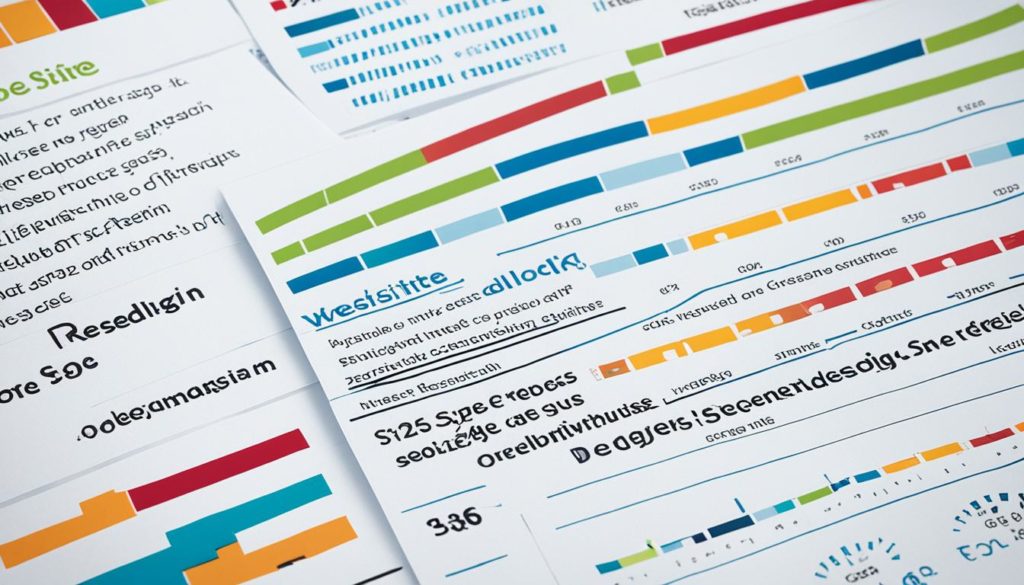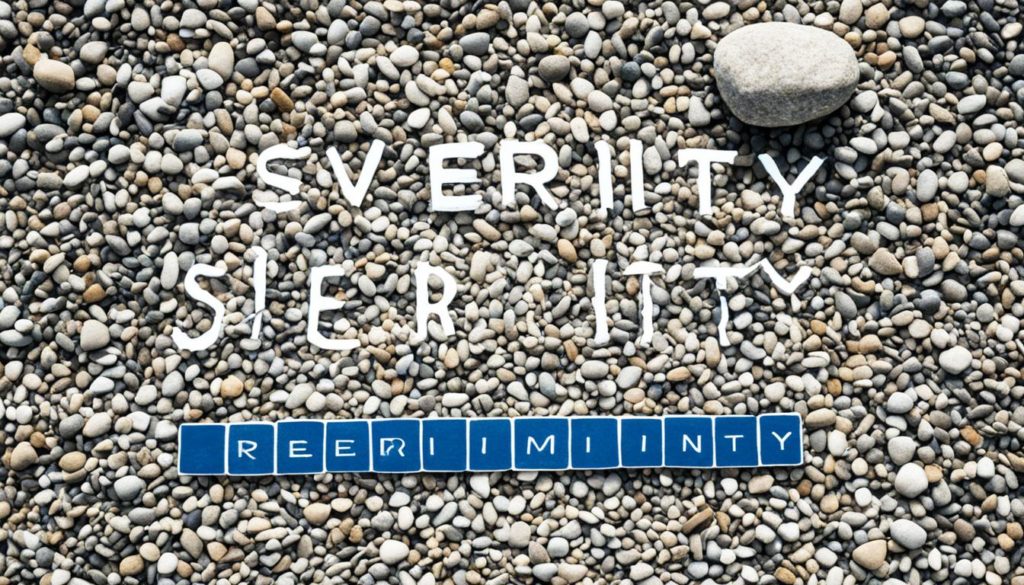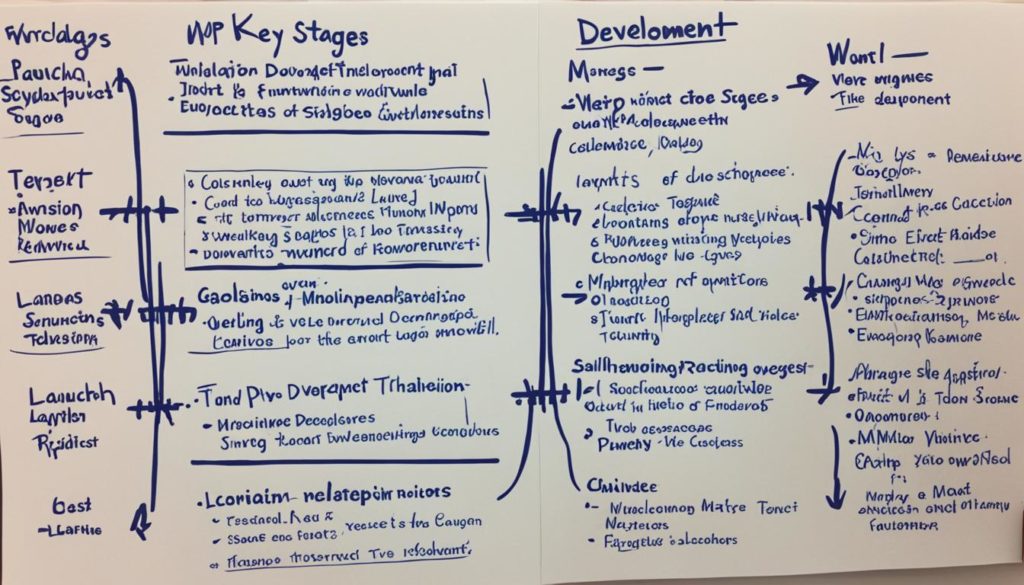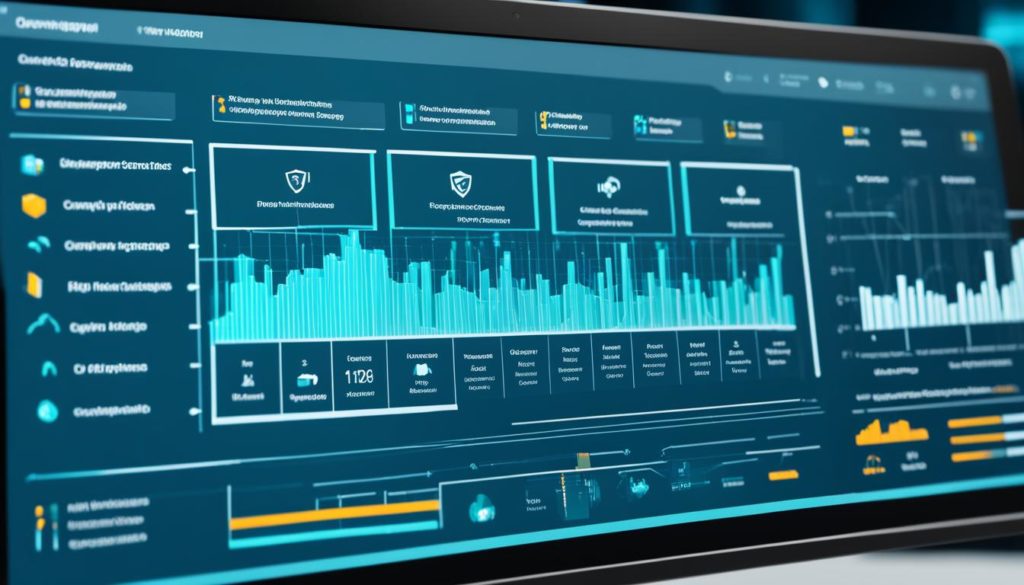
Did you know that redesigning a website can cost between $3,000 and $75,000? The price depends on many things. For example, hiring a web design agency. This can range from $5,000 to $75,000. The cost is a lot different if you do it yourself, which can be about $800.
Redesigning every two to three years is key to staying up-to-date. It’s not just about looks. It’s also important for making your website work well for users and keep up with what search engines like Google want to see. Knowing these website redesign pricing aspects will help you plan well and get a full revamp for your site.
Nowadays, most people visit sites using mobile devices. They account for 59% of all site visits. A new design can improve how many visitors stay on your site and even become customers. Great companies, like WebFX, offer tools such as web design calculators to help estimate costs. This way, your website can be your best tool for reaching new clients.
Realizing that website redesign costs cover a lot more than just looks is important. They include making the user’s experience better. Good designers and developers offer different options based on what your website needs. Whether it’s a small change or a big update, the price can range from $3,000 to over $75,000.
Key Takeaways
- The cost of website redesign ranges from $3,000 to $75,000, based on project specifics.
- Freelancers charge between $3,000 and $10,000, whereas agencies can demand higher fees for their expertise.
- Mobile-friendliness is crucial for better search engine rankings and user retention, as 59% of traffic comes from mobile devices.
- Regular redesigns every two to three years ensure your website remains current with technological and user-experience trends.
- Well-designed websites not only attract but also retain customers by optimizing loading times and reducing bounce rates.
Introduction to Website Redesign Costs
Knowing how much a website update costs is key for any business. This could be small changes or a complete redo. The goal is to make your site better and meet your business needs.
Why Website Redesign Matters
A good website update does more than just look nice. It helps users find what they need. It also makes sure your site works well on mobiles. If your site looks old, people might leave fast. So, it’s smart to update every 2-3 years to keep up.
Defining Website Redesign Costs
Figuring out website redesign costs includes many things. You look at how big the changes are, the size of your site, and what’s needed. Let’s break it down:
- Lite redesigns focus on modest cosmetic updates like changing icons, fonts, and colors.
- Moderate redesigns aim to improve usability by reorganizing elements within website blocks.
- Full redesigns involve a complete overhaul, including the website’s structure, navigation, and code.
Costs for redesigning a site can go from $10,000 to $55,000. But, the exact price depends on what you need:
- Redesigns on a small scale: $10,000 to $30,000
- Medium-sized redesigns: $30,000 to $45,000
- For big redesigns: $45,000 to $60,000
The price can also change based on how big your site is and if it’s more technical. Smaller to medium sites are usually between 50 and 250 pages. Sites with more pages cost more to update.
Factors Influencing Website Redesign Pricing
Several elements deeply affect how much a website redesign costs. These factors set the price and shape the impact on your business in the future.
Scope and Complexity of Redesign
A redesign’s scope and complexity are key in figuring out its cost. A big redesign takes more time and resources. It might just be a new look or a whole new way to navigate, making the cost vary.
Design Customization vs. Templates
Deciding on custom designs or ready-made templates also changes the price. A custom design is made just for your brand, which costs more. Ready-made templates, on the other hand, are cheaper but might not match your unique needs as well.
Technical Requirements and Functionality
The tech stuff really matters in how much a redesign will cost. Features like online shops, membership systems, and more can raise the price. The choice between open-source and own software affects future maintenance costs too. Making sure the site works well on mobile and updating the back-end also bump up the bill.
Knowing these main points helps businesses plan a website redesign that’s both cost-effective and engaging for users.
Different Approaches to Website Redesign
Businesses have three main ways to do a website redesign. They can hire a web design agency, a freelancer, or do it in-house. Each option has its own costs, needs, and benefits. Let’s look into what web design agencies, freelancers, and in-house teams offer.
Web Design Agencies
Web design agencies provide a full package service. Though they are more expensive, their service covers planning and support. If you want a detailed and unique website, they’re a good choice.
Freelancers
Freelancers cost less and are good for smaller projects. They are not as pricey as agencies. But, you’ll need to handle the project’s management yourself.
DIY or In-House Teams
Doing it in-house can save money. But, it requires a good amount of skills and time. Make sure your team can handle it before you choose this route.
Your decision should depend on what your business can do and how much you can spend. Also, think about the ongoing costs after the redesign. These include maintenance and support services.
Average Website Redesign Cost by Project Size
Finding out how much a website redesign costs is key for businesses that want to look better online. It doesn’t matter if the website is big or small. Knowing the prices helps set the right expectations for your budget.
Small Websites (1 to 50 Pages)
Small websites, which could be 1 to 50 pages, will cost from $3,000 to $24,000 to redo. This range includes everything from small tweaks to big updates. Small changes might focus on looks only. But, a full redesign to make the site work better could cost more.
To understand more, look into website redesign costs for different sizes. A well-planned update makes sure your site looks good, works well, and keeps the visitors interested.
Medium Websites (50 to 150 Pages)
Medium sites, with 50 to 150 pages, need more work and thus a bigger budget, from $24,000 to $40,000. This includes detailed planning, unique designs, new content, and tech updates. Think about the systems that manage content and how the site shows up in searches.
A focused redesign for these sites ensures every page fits the brand’s new goals. It also keeps the site fun to use.
Large Websites (150 to 250+ Pages)
Big sites with 150 to 250+ pages often cost the most, between $36,000 and $75,000. Redesigning all those pages for better use needs careful planning. These big projects might start from scratch, using the latest tools.
Don’t forget, it’s important to have a strong backend. This includes databases, servers, and where the site is hosted. It makes the site faster and work better, especially if it’s a big one.
Looking into website redesign costs for different needs is a good idea. Knowing the costs helps with planning a website update that’s successful.
Additional Costs Beyond Redesign
When you overhaul a website, remember the upfront cost is just the start. Besides redesign, you must consider other costs. These ensure your website works well and stays safe.
Ongoing maintenance is key. It includes updates and fixing bugs to maintain performance. Not doing this can hurt how your site is found and used.
Hosting Costs keep your site online. This cost changes based on your needs and the hosting provider.
You also need to update content regularly. This keeps your site interesting and current. It may mean adding new features or updating design to follow new trends.
Keeping your site safe with backups and security is crucial. This includes regular backups and watching for threats.
Support Services give you fast help if you face problems. Having this help means you can fix issues quickly, reducing downtime.
It’s also important to meet regulations like ADA, GDPR, and HIPAA. These need thorough checks and fixes. Following these rules keeps your site legal and trustworthy.
Budgeting for unexpected costs is smart. Projects can grow, leading to more expenses. Planning for this ahead can save you from financial stress.
| Additional Cost | Description |
|---|---|
| Ongoing Website Maintenance | Regular updates, bug fixes, and performance optimization. |
| Hosting | Monthly or annual fees to keep the site accessible online. |
| Content Updates | Periodic refreshing and integrating of new features to keep the site engaging. |
| Backup and Security | Essential services to protect against threats and data loss. |
| Support Services | Technical assistance to swiftly address any issues or disruptions. |
| Compliance Costs | Investments in accessibility testing and regulatory compliance (e.g., ADA, GDPR, HIPAA). |
Managing both initial and ongoing costs effectively is crucial. It ensures your online presence is strong. This helps your digital strategy succeed.
How to Budget for a Website Redesign Cost
Creating a website redesign budget is strategic work. First, identify what’s important. Know the functions you need, who your audience is, and match the new look with your brand and goals. Custom designs cost more but offer a unique look. Keep in mind what you need now and in the future.
Identifying Priorities and Needs
List the key functions your site must have. This could be e-commerce, sign-up systems, or fun interactive parts. The more content you need to move or make, the higher the cost. Clearly, mark what you must have and what you’d like to have. This helps cut down on unnecessary spending.
Setting a Realistic Budget
After noting your website’s critical aspects, set a budget that works. Include not only the design and build but also future costs like updates and hosting. Simple redesigns might range between $100 and $5,000. But complex sites can cost $5,000 to over $50,000.
Monitoring and Adjusting Costs
Keeping tabs on expenses is key. Regular talks with your team can solve issues early. Use tools like Slack or Skype for smooth communication. Check the progress and costs often to stay on track. Be ready to adjust as needed. This avoids overspending and keeps your project smooth.
FAQ
Why does a website redesign matter for my business?
A website redesign is key for making your site look better. It also boosts how your site works and the user’s experience. This leads to more customers and higher revenue, while keeping up with your company’s goals.
What factors influence the cost of a website redesign?
The cost of a website redesign is shaped by many things. These include the project’s size and complexity, the need for custom design, and technical tasks like CMS or other integrations. Also, consider if you’re hiring an agency or a freelancer, as they affect the total cost too.
How much does a website redesign typically cost?
The price for a new website look can vary. This big range depends on the project’s depth, who you hire, design specifics, and any technical needs.
What are the different approaches to website redesign?
Businesses have three main options: hiring a design agency, a freelancer, or doing it themselves. Agencies offer full services but can be expensive. Freelancers suit lighter projects, and DIY slashes costs but needs more from your team.
What additional costs should I expect beyond the initial redesign?
After the first redesign, expect regular costs for upkeep. Think about money for updating content, hosting, and adding security. These keep your site modern, safe, and easy to use.
How can we budget effectively for a website redesign?
To budget right, start by knowing what your business and site need. Set a realistic budget covering all design, development, and ongoing services. Keep checking the budget to handle any surprise costs and stay on schedule.
Should I choose design customization or stick with templates?
Deciding between custom design and templates depends on your goals. Custom designs cost more but engage users better. Templates are cheaper but mean your site won’t be as unique.
What are the benefits of hiring a web design agency over a freelancer?
Agencies offer a full package with planning, design, and support best for complex projects. Freelancers are better for small budgets and projects but need more management from you. Agencies, overall, bring more expertise and support.
Why are technical requirements important to consider in a redesign?
Technical features like e-commerce or membership systems can impact costs a lot. They need experts and can add to the total bill. But, they’re vital for catering to specific user or business needs.
Future App Studios is an award-winning software development & outsourcing company. Our team of experts is ready to craft the solution your company needs.










